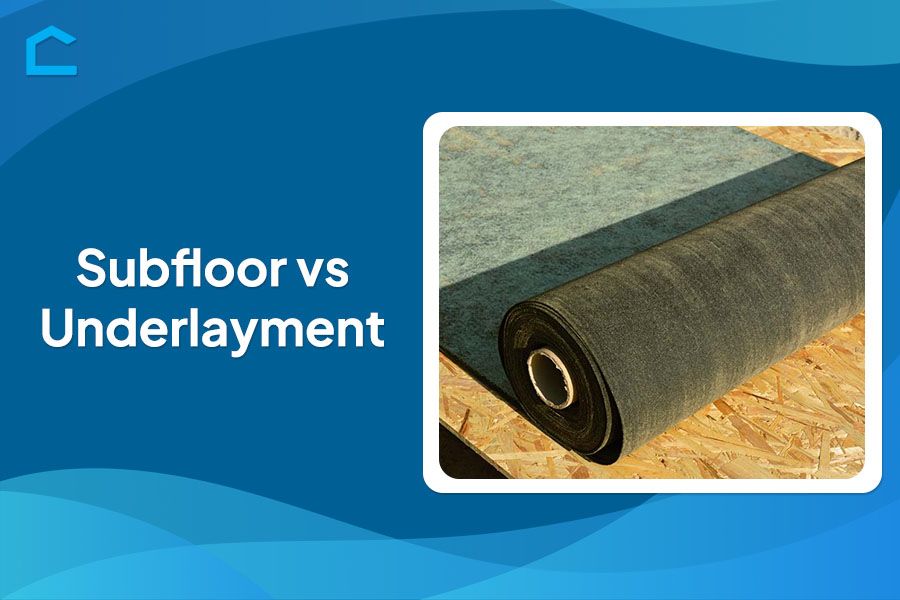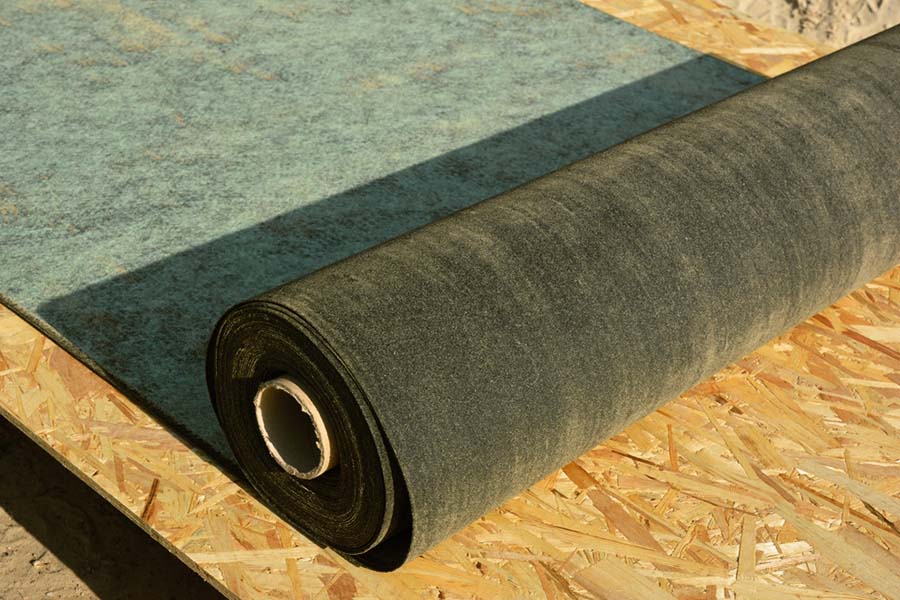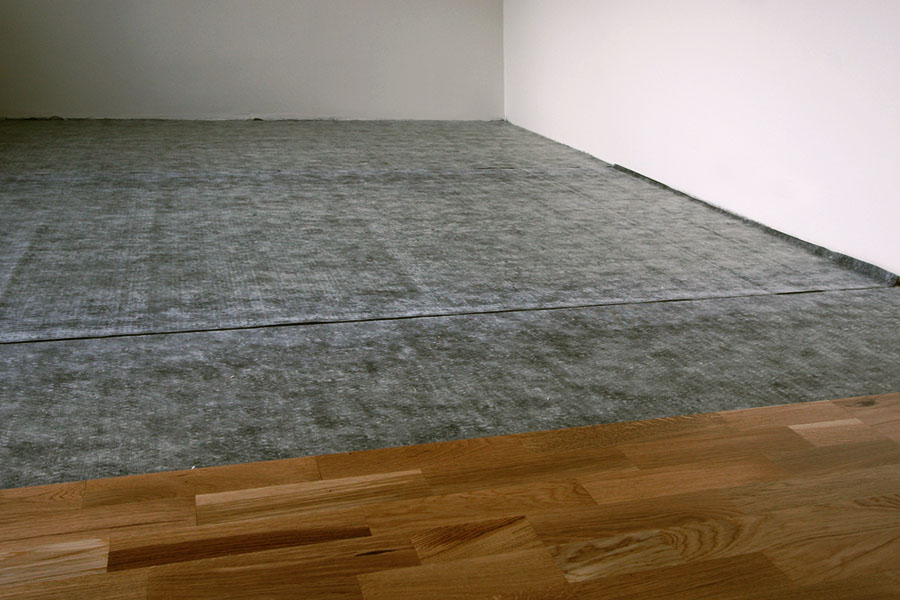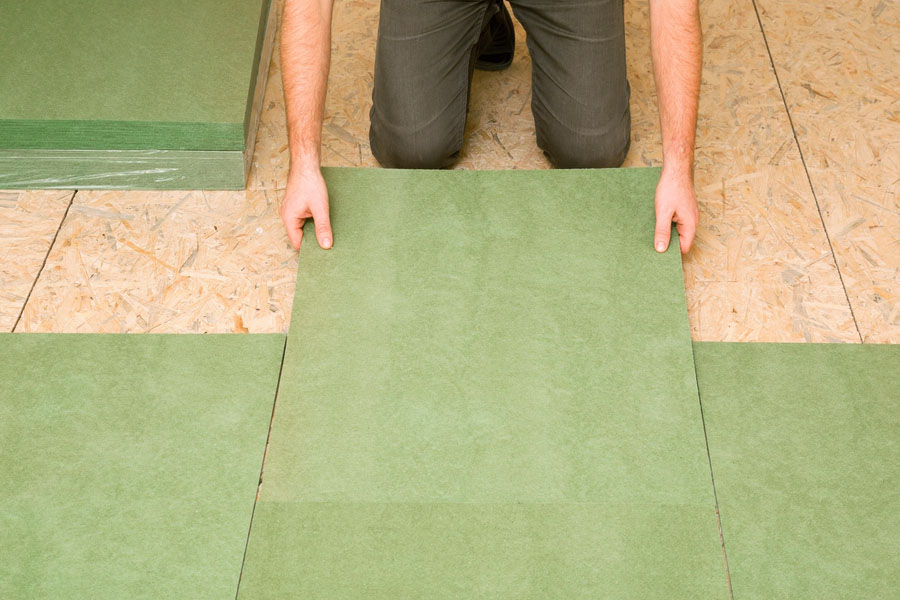Subfloor vs Underlayment

When you think of flooring in your house, you probably think it’s just a layer of visible flooring touching your feet. But there’s more to it. The flooring is actually a system of layered components, including underlayment and subfloor, before installing either laminate, vinyl planks, or hardwood flooring. Although these two components are often used interchangeably, each plays a distinct role in creating a solid foundation and enhancing the performance of your chosen flooring material.
At first glance, the differences between subfloor vs underlayment might not be immediately apparent. However, a deeper understanding of their unique characteristics, functions, and applications is significant for achieving a long-lasting, comfortable, and visually appealing flooring solution.

Source: shutterstock.com / Photo Contributor: Radovan1
What Are The Layers?
Subfloor
A subfloor is the solid foundation layer beneath your finished flooring, providing stability, flatness, and support. It ensures the performance and longevity of your flooring system by distributing the load evenly and preventing damage.
Common subfloor materials include plywood, oriented strand board (OSB), concrete, and particleboard—each with its own characteristics and benefits. Proper subfloor preparation, including cleaning, drying, repairing, and leveling, is essential for a successful flooring installation.
Understanding the importance of a subfloor and the various materials available is key. It helps ensure a solid foundation for your finished floor. With the right subfloor, you can achieve a beautiful, durable, and long-lasting result.
Underlayment
An underlayment is a thin layer installed between the subfloor and the final floor covering. It acts as a protective buffer, enhancing floor performance. Underlayments come in various materials like foam, cork, and felt.
Foam underlayments provide moisture resistance, cushioning for comfort, and reduce sound transmission – ideal for laminate and hardwood floors. Cork offers excellent thermal insulation and sound absorption and is an eco-friendly option suitable for any floor type.
Felt underlayments primarily function as moisture barriers and vapor retarders while also reducing sound transfer. Underlayments extend the floor’s lifespan by preventing cracks/damage from impact. They ensure a level surface for proper installation.
Some offer radiant heat protection or anti-static properties. Consider all factors like moisture, sound, and insulation needs when selecting an underlayment for your flooring project.
Key Difference Between Underlayment and Subfloor
While both subfloors and underlayments are integral components of a flooring system, they serve distinct roles and are composed of different materials. The subfloor is the structural base layer below the final flooring, providing a stable, level surface for the installation.
It acts as the foundation, bearing the weight and impact of the entire flooring system above. Subfloors are typically constructed from durable materials like plywood, oriented strand board (OSB), or concrete. They offer the necessary strength and stability to prevent sagging or unevenness over time.
In contrast, the underlayment is an additional protective layer installed over the subfloor. It is a supplementary component designed to enhance the overall performance of the flooring rather than provide structural support.
Understanding the Roles and Benefits of Underlayments
Underlayments are made from softer materials such as foam, cork, or felt, each offering unique benefits. Their primary functions include moisture protection, sound absorption, thermal insulation, and cushioning for added comfort underfoot.

Source: shutterstock.com / Photo Contributor: J. Helgason
Complementing the subfloor
While the subfloor is a crucial structural element that must be solid, smooth, and free of any defects. The underlayment serves to improve the flooring experience. It addresses specific needs like moisture control, noise reduction, insulation, and impact resistance.
The subfloor ensures stability and prevents issues like sagging or unevenness. The underlayment enhances the performance and longevity of the flooring by creating an optimal environment for installation and use.
The collaborative role of subfloors and underlayments
By understanding the distinct roles and material compositions of subfloors and underlayments, it becomes clear that both components contribute to the overall quality and durability of a flooring system, albeit in different ways.
The subfloor provides the necessary structural foundation, while the underlayment offers supplementary benefits that optimize the performance and lifespan of the final floor covering.
Importance of Both Subfloor and Underlayment
The subfloor and underlayment play interconnected roles in creating a high-performance flooring system. The subfloor provides the structural foundation, while the underlayment protects against moisture, impacts, and noise transfer.
Together, they enhance the durability and longevity of the final flooring layer. The underlayment cushions and absorbs sound, preventing creaks when combined with a level subfloor. This improves comfort and reduces noise pollution.
Some underlayments offer moisture barriers and thermal insulation, regulating humidity and temperatures in tandem with the subfloor. A level subfloor allows smooth underlayment installation, while the underlayment smooths out minor subfloor imperfections.
This collaboration enables a professional, flawless final floor installation. By working synergistically, the subfloor and underlayment optimize performance across durability, comfort, moisture management, and installation quality. Prioritizing both components is vital for a truly successful flooring project.
Installation Tips for Subfloors and Underlayments
Proper preparation for subfloor installation
When installing or repairing a subfloor, it’s crucial to ensure the surface is clean, level, and free of any debris or damaged sections. Use floor leveling compounds to address any low spots or unevenness in the subfloor. Replace any water-damaged or rotten sections before proceeding.
For plywood or OSB subfloors, stagger the seams and leave proper expansion gaps. Secure the panels with ring-shank nails or screws into the floor joists below. Check for any squeaks or loose areas and re-secure them to create a solid base.
Before laying the underlayment, take the time to properly prepare the subfloor surface. Thoroughly sweep and vacuum the area to remove any loose particles, then use a damp mop to capture any remaining dust or debris.
Allow the subfloor to dry completely before proceeding with underlayment installation. If working with a concrete subfloor, apply a moisture barrier or sealant first. Follow the manufacturer’s instructions for proper application to prevent moisture damage.
Best practices for underlayment installation
During the underlayment installation process, use a utility knife to carefully cut the material to the required size and shape. Join the seams tightly together without any overlapping or gaps. Follow the specific roll-out patterns and techniques recommended by the product manufacturer’s instructions.
For perimeter areas or rooms with door frames, install the underlayment before removing baseboards, door trim, or thresholds. After the underlayment is in place, you can trim it flush to the walls using a high-quality utility knife. Then, replace any baseboards or trim pieces as needed.
By following these best practices and taking the time to properly install both the subfloor and underlayment layers, you’ll ensure a solid foundation and optimal performance of the flooring. Paying close attention to detail during this critical preparation stage sets the groundwork for a long-lasting, high-quality finished product.
Common Issues and Solutions
Common issues with subfloors and underlayments
One of the most prevalent issues that can affect subfloors and underlayments is moisture damage. Excess moisture can lead to warping, mold, mildew growth, and structural damage over time. Proper moisture barriers are essential for prevention.
Early signs of moisture issues include discoloration, soft spots, or musty odors in the flooring area. If these signs are present, it’s crucial to address the moisture sources, such as leaks or high humidity levels. Consider using moisture-resistant underlayment materials like cork.
Another common problem is uneven surfaces, which can be caused by subfloor damage, improper installation, or settling over time. Subfloor imperfections can telegraph through flooring materials, creating an unsightly and uneven appearance.
While underlayment can help smooth out minor unevenness, significant low spots or severely uneven areas will require more extensive work. In these cases, use self-leveling compounds to address major low spots.

Source: shutterstock.com / Photo Contributor: FotoDuets
Conclusion
Understanding the distinction between subfloor and underlayment is paramount for a successful and durable flooring installation. This article explored their unique roles, characteristics, and impact on overall flooring system performance and longevity.
By diving into the functions of subfloor vs underlayment, we aimed to provide comprehensive knowledge to make judicious decisions when planning your flooring project.
With a solid subfloor foundation and the supplementary benefits of an underlayment, you can ensure a visually appealing result that provides comfort, protection, and long-lasting value for your investment.
